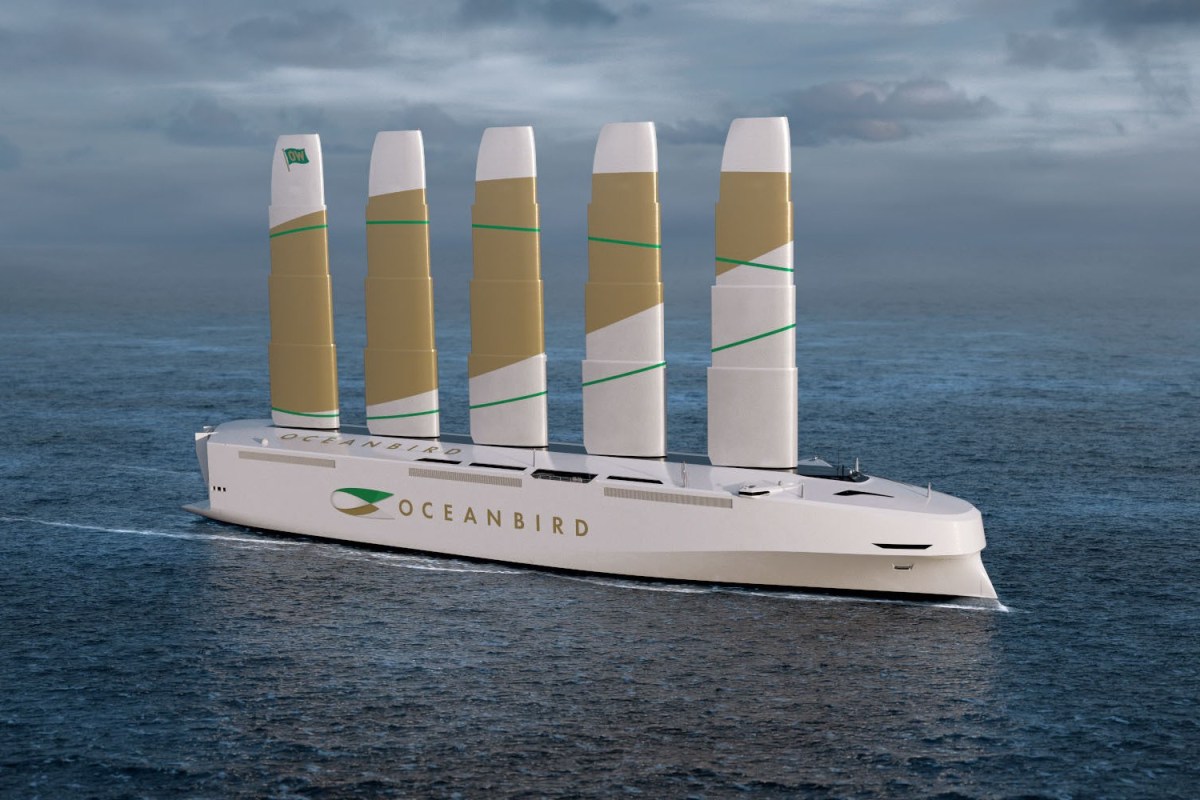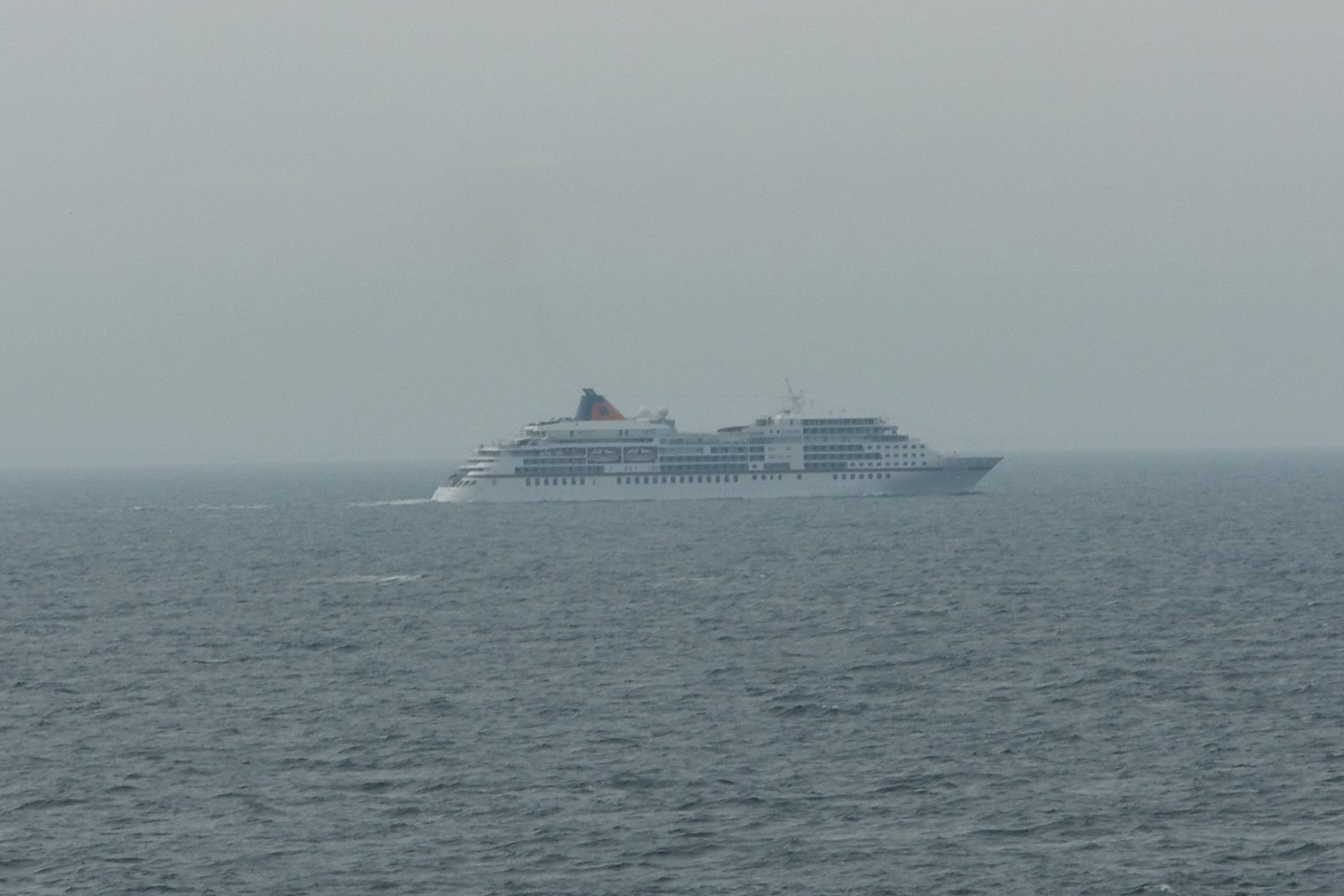If you’re concerned about cutting carbon emissions, figuring out how to make global shipping more carbon-neutral is one of many steps that could be taken to make an industry more ecologically sound. And while the cargo vessels of a few centuries ago got from place to place using sails, the expectations for speed and design in 2020 are a little higher. But what if there was a way to revisit the idea of a wind-powered ship but at a much greater scale?
A new partnership involving Stockholm’s KTH Royal Institute of Technology, maritime consultancy SSPA and Wallenius Marine explored what a wind-powered cargo vessel might look like. The answer? Well, it’s got wings.
Writing at Jalopnik, Erin Marquis describes the proposed design — the Oceanbird — as “the stegosaurus-looking result of one drunken night of passion between an airliner and a cargo ship.” And that’s about the most succinct description of this theoretical cargo ship out there.
The design’s 5 wings will be able to extend to 80 feet in height — though they’ll also be able to drop lower when going below bridges or other structures.
Marquis writes that the Oceanbird has the goal of being able to take 7,000 cars on a trans-Atlantic voyage in 12 days. (Currently, it takes 7 or 8.) The plan is for the first Oceanbird to take to the seas in 2025; its designers believe that the same concept could also be used for cruise ships. Can it make the world a greener place? Let’s hope so.
Subscribe here for our free daily newsletter
Thanks for reading InsideHook. Sign up for our daily newsletter and be in the know.
















